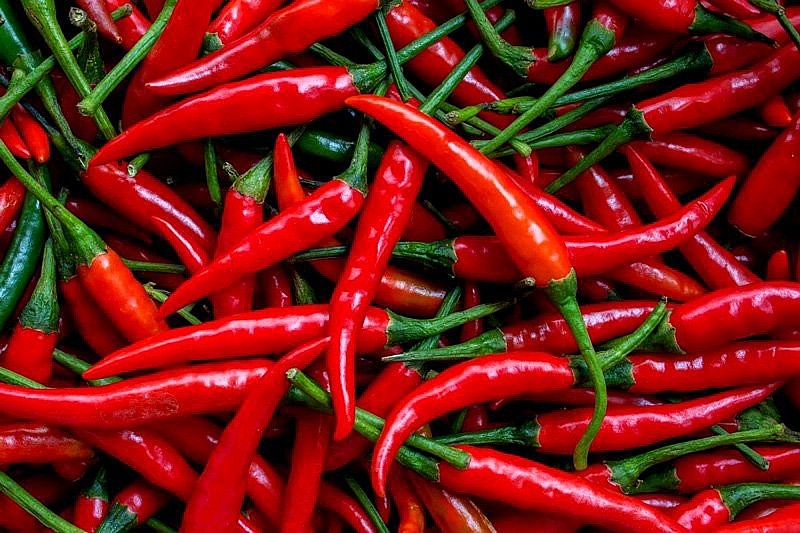| Vietnamese chili peppers are subject to increased inspection in Korea and Taiwan (China)Chili exports to the Chinese market increased by 72.3% |
Vietnam SPS Office ( Ministry of Agriculture and Rural Development ) said that the Office has just received notice number G/SPS/N/TPKM/625 from the Food and Drug Administration, Ministry of Health and Taiwan Welfare ( China ) announced the application of regulations for goods used as food and classified according to CCC code.
 |
| Exporting chili to the Taiwan market (China) needs to comply with new regulations |
Specifically, the goods are used as food and classified according to CCC code 0904.22.00.00-1 (fruits of the genus Capsicum or of the genus Pimenta, crushed or ground) and 0904.21.90.00-3 (other fruits of the genus Capsicum or of the genus Pimenta in dry, uncrushed or unground form) must provide a test report on Sudan dye. The test report includes Sudan I-IV accompanied by: Test method notes, limits of quantification (LOQ), testing units and some related information.
According to the Food and Drug Administration, Ministry of Health and Welfare of Taiwan (China), Sudan dye was detected in many batches of imported chili powder during border inspection or point-of-sale inspection. Goods from 2023 to 2024 originate from China, Thailand, Türkiye and Vietnam.
Sudan is an industrial pigment used to dye plastics and other synthetic substances red. In the world, Sudan dye is classified as a toxic dye, because it has the ability to cause cancer through damaging cell DNA. Sudan has 4 types, ranked from I to IV (bright red).
Sudan dye is often used to give food an attractive red color, as well as keep food color longer. People often find this substance in chili powder and curry powder.
Based on the mechanism of action of Sudan on cells (creating mutagens, causing cells to proliferate uncontrollably - cancer), scientists mostly agree that there is no safety limit. for Sudan. Some countries even ban this substance in food.
After receiving Notice G/SPS/N/TPKM/625 from Taiwan, the Vietnam SPS Office sent a written request to the Department of Quality, Processing and Market Development, Department of Plant Protection (Ministry of Agriculture) and Rural Development); Department of Import and Export (Ministry of Industry and Trade); Department of Food Safety ( Ministry of Health ); Vietnam Fruit and Vegetable Association; Vietnam Pepper and Spice Association disseminates and implements your side's requests, ensuring compliance with import market regulations.
The Vietnam Pepper and Vietnam Spice Association (VPSA) said that by the end of March 2024, Vietnam exported 3,141 tons of chili with a total export turnover of 8.1 million USD. Compared to the same period in 2023, export volume increased by 17.6% and turnover increased by 52.8%. China and Laos are the two main export markets reaching 2,753 tons and 259 tons, accounting for 95.9% of total exports.
Chili is most grown in the Mekong Delta, especially the provinces of Dong Thap, An Giang, Tien Giang, Soc Trang, Vinh Long and Tra Vinh. With a total area of over 7,000 hectares, chili produces about 100,000 tons a year.
In addition, chili is also grown in the Central Highlands with an area of 4,000 - 5,000 hectares, with an output of about 60,000 tons a year.
Since the end of February 2024, the Taiwan (China) market has restricted the import of chili and chili products for dozens of businesses from China, Thailand, Mexico and Vietnam. In March, Taiwan (China) continued to strengthen supervision of imported chili and chili products.



